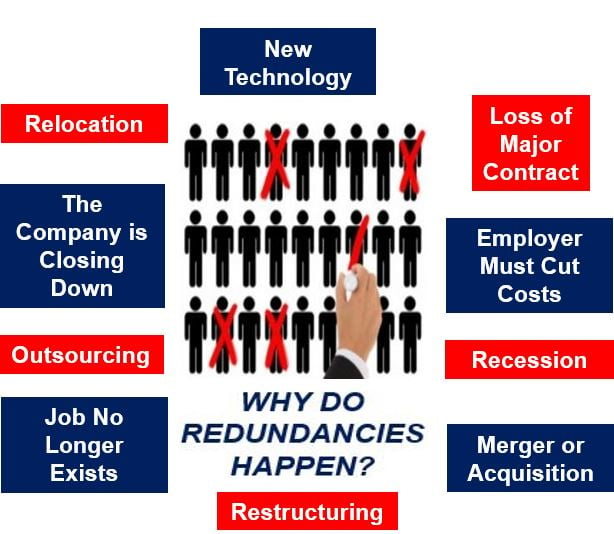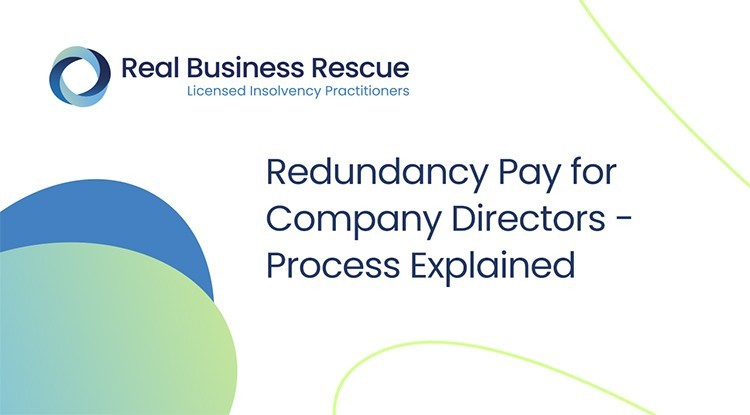What Happens to Redundancy If Company Goes Bust? An Overview to Your Rights
What Happens to Redundancy If Company Goes Bust? An Overview to Your Rights
Blog Article
Investigating the Interaction Between Firm Redundancy and Business Adaptability for Future Development
In the dynamic landscape these days's organization world, the elaborate partnership between firm redundancy and business adaptability arises as a crucial variable for sustained growth and success. Companies commonly deal with the challenge of striking a fragile equilibrium between preserving a level of redundancy to reduce dangers and cultivating versatility to respond swiftly to the ever-evolving market needs. This delicate interplay holds the key to not only surviving in turbulent times yet also thriving in the face of unpredictability. As we discover the multifaceted measurements of this interaction, interesting understandings into exactly how organizations navigate these complexities to pave the way for future development await.
Relevance of Firm Redundancy
Company redundancy is a vital component that boosts organizational resilience and reduces functional threats. By incorporating redundancy actions within the organizational framework, business can much better withstand unforeseen disturbances and variations in the business environment. Redundancy acts as a strategic buffer, permitting business to adjust and react successfully to unanticipated challenges without endangering important operations.
One trick facet of the significance of business redundancy is its duty in ensuring continuity throughout times of dilemma. When confronted with abrupt adjustments or emergencies, repetitive systems, resources, or personnel can step in to maintain important features and avoid prevalent interruptions. This connection not just safeguards the company's credibility and customer trust but likewise lessens monetary losses and functional downtime.

Methods for Organizational Versatility

Another crucial method is buying modern technology and facilities that can sustain adaptability and scalability. Implementing electronic tools, automation, and data analytics can enhance operations, boost effectiveness, and offer useful insights for notified decision-making. Moreover, creating versatile organizational structures that enable quick adjustments to market dynamics and consumer requirements is important for remaining competitive in a rapidly evolving atmosphere. By proactively identifying potential interruptions and possibilities, organizations can proactively adjust and flourish in an ever-changing business landscape.
Balancing Redundancy and Versatility
Accomplishing a harmonious equilibrium in between functional redundancy and organizational versatility is extremely important in browsing the complexities of a vibrant company environment. Redundancy within a company offers a safeguard, making sure continuity and stability in operations. However, an excess of redundancy can cause inefficiencies and impede versatility to altering market conditions. On the other hand, organizational flexibility allows firms to respond immediately to external disturbances and confiscate brand-new opportunities. Striking the ideal balance in between redundancy and adaptability is a delicate process that calls for a deep understanding of the company's objectives, industry characteristics, and risk tolerance.
To achieve this equilibrium, firms require to conduct routine assessments of their operations to identify areas where redundancy is required for threat mitigation and where versatility can drive development and development. Carrying out adaptable frameworks, promoting a culture of constant discovering and enhancement, and motivating open interaction across all levels of the company are key approaches to integrate redundancy and flexibility properly. By lining up these two critical elements, firms can place themselves for lasting development and success in an ever-changing organization landscape.
Study on Adjustment Success
In checking out instances of effective organizational adjustment, it becomes apparent that the interaction between operational redundancy and versatility is a specifying consider forming durable companies. One compelling study is that of Netflix. Originally a DVD rental service, Netflix showed exceptional versatility by transitioning right into a streaming platform when digitalization interrupted the check my reference sector. By tactically buying modern technology and content creation, Netflix not only made it through yet thrived in a quickly evolving market. An additional standout instance is Amazon. Starting as an online book shop, Amazon continually adjusted its service version, expanding into varied industries such as cloud computer and expert system. This versatility permitted Amazon to stay ahead of competitors and meet transforming consumer needs. Lastly, Adobe gives a notable illustration of successful adaptation. The business moved from marketing software application licenses to a subscription-based version, guaranteeing reoccuring revenue streams and improved client engagement. These situation studies highlight the significance of functional redundancy combined with business adaptability in cultivating long-lasting development and competitiveness.
Structure Durability for Future Growth
Building resilience for future development calls for a critical alignment of functional procedures with market characteristics and emerging fads. Business must adjust to transforming settings by fostering a culture of flexibility, technology, and constant improvement. Durability involves not only recuperating from troubles however also proactively preparing for future difficulties. One crucial aspect of building strength is spending in robust threat monitoring methods to mitigate possible disturbances. This consists of situation planning, diversifying supply chains, and establishing contingency plans for numerous backups (who pays redundancy money).
Moreover, cultivating solid relationships with stakeholders, such as consumers, employees, distributors, and the area, is necessary for weathering uncertainties and maintaining count on and small business closing employee rights uk support during stormy times. Effective communication and openness play an important role in structure resilience, as they help assist in and line up assumptions partnership in browsing uncertainties.
Furthermore, companies need to prioritize learning and advancement initiatives to upskill workers and outfit them with the required tools to adapt to altering situations. By investing in their workforce, companies can enhance their versatility and dexterity, eventually strengthening their resilience for lasting future development.
Conclusion

In the dynamic landscape of today's company world, the complex partnership in between company redundancy and business adaptability arises as an important factor for continual development and success. Business often face the obstacle of striking a delicate balance in between maintaining a level of redundancy to mitigate risks and cultivating flexibility to respond swiftly to the ever-evolving market needs.To attain this equilibrium, firms need to perform regular analyses of their procedures to determine locations where redundancy is needed for danger mitigation and where flexibility can drive advancement and growth.In verdict, the interplay in between business redundancy and organizational flexibility is essential for future growth. Building resilience with a mix of redundancy and flexibility will certainly ensure that business are prepared for the obstacles of the future.
Report this page